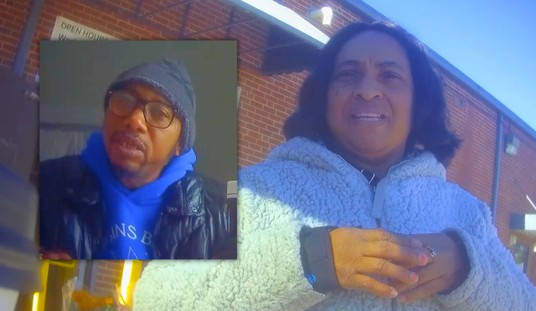Gallup has released the first part of its annual “State of the States” series, starting with a look at party identification:
Nationwide, party support shifted in a slightly more Republican direction in 2009 after a historically strong Democratic year in 2008. Overall, 49% of Americans in 2009 identified as Democrats or said they were independent but leaned to the Democratic Party, while 41% identified as Republicans or were Republican-leaning independents. That 8-point Democratic advantage compares to a 12-point, 52% to 40%, Democratic advantage in 2008.
Thus, even with the reduction in Democratic strength, the party still maintained a solid advantage over the Republicans nationally last year. It follows, then, that most states continued to be Democratic in their political orientation. (A table showing the full data for each state appears at the end of the article.)
It is important to note that the classification of states reported here is based on the political affiliations of all residents, and does not necessarily indicate how a state might vote in a given election. Also, the partisanship figures include independents who have a partisan leaning with each party’s core identifiers. This makes the states more comparable because the percentage of independents varies widely by state, and can understate a party’s true strength in a state.
The lesson of the past year — when the colors on the map looked the same as today — is how true that last paragraph is.
The obvious starting point is that Gallup’s map would give no inkling that Massachusetts has just elected its first GOP to the U.S. Senate in decades, let alone governors in Virginia and New Jersey.
The Gallup map also fails to show what lefty blogger Chris Bowers projects for the 2010 midterm elections. His most recent calculations have the Democrats losing a net of five more Senate seats, including from 11 states Gallup has colored blue — Pennsylvania, Ohio, Arkansas, Colorado, North Carolina, Kentucky, Florida, Nevada, New Hampshire, North Dakota, and Delaware. Bowers also has a grim prognosis for House Democrats:
For the first time since I began monitoring the national House ballot since October, Democrats have fallen behind. Further, they have no clar path back into the lead, as five separate polling organizations now show them facing a deficit. This includes two of the three polling outfits with weekly poll updates, Daily Kos and Rasmussen.
It would be very difficult for Democrats to maintain control of the House of Representatives when facing a deficit like this. The median error for this methodology is 1.77%. As such, given current polling, the odds of a Democratic victory in the popular vote (if the election were held tomorrow) would only 32%. Given that Republicans have an edge in current district composition (the 218th district has a Cook PVI of R+2), that Republicans will likely have an edge in total number of districts with a candidate, and that many of these polls are still measuring all adults rather than registered voters or likely voters, if anything the Republican advantage of 1.2% is an underestimation.
Of course, November is a lifetime away in politics. Events could shift the environment more in favor of the Democrats. Their best bet is that our economy recovers, despite the Democratic agenda. However, economic growth would have to equal 5 percent for all of 2010 just to lower the average jobless rate for the year by 1 percentage point. Economists find that scenario unlikely. And given the degree to which public perceptions of the economy are driven by unemployment, a reduction of 1 percent might not be enough to seriously affect public opinion of the Democrats, even if it happens.








Join the conversation as a VIP Member